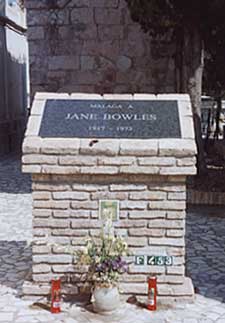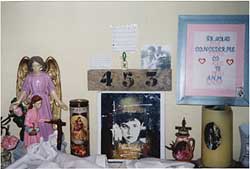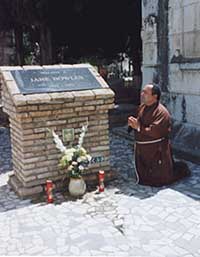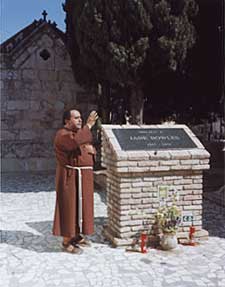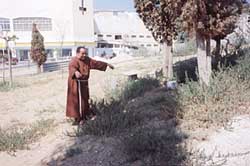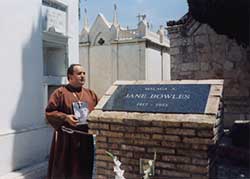
Thursday, June 20, 2013
Saturday, June 8, 2013
http://www.raintaxi.com/online/2002summer/bowles.shtml
Jane Bowles was an American author of surpassing qualities, although her modest oeuvre remains well outside the consciousness of the general reading public, particularly in the United States. Best known for her novel Two Serious Ladies, published in 1943, she also wrote a number of notable short stories, including "Guatemalan Idyll," "A Stick of Green Candy," and "Tea on the Mountain," as well as the play In the Summer House. These were reissued in the collection entitled My Sister's Hand in Mine, which included a laudatory introduction by Truman Capote, who cited her "... subtlest comprehension of eccentricity and human apartness." Other luminaries have praised her writings: Tennessee Williams called her "the most important writer of prose fiction in modern American letters," and John Ashbery found her to be "one of the finest modern writers of fiction in any language."
Her work was, in Williams's words, "the heart of her life." And Jane's life-animated and exotic, even quixotic-reached and resonated well beyond perceived limits imposed by borders and conventions. Not incidentally, it presaged by a generation the struggle of Western women towards a less-fettered psychology.
With her humor, linguistic abilities (she was fluent in several languages), skill at mimicry and genuine bonhomie, she and husband Paul Bowles were indispensable invitees on the guest lists of the New York art cognoscenti during the 1940s. After the Bowleses moved to Tangier, they found themselves the cynosure of the city's international community throughout the 1950s and 1960s. As Gore Vidal wrote: "Although unknown to the general public, the Bowleses were famous among those who were famous; and in some mysterious way the art-grandees wanted, if not the admiration of the Bowleses (seldom bestowed), their tolerance."
Despite Jane Bowles's relative obscurity, the unique aesthetic sensibility she brought to her life and work has continued to attract a small but steadfast following.
Jane Bowles moved from New York to Tangier in 1948, where she lived with Paul. After a prolonged illness that began with her first stroke in 1957, she was admitted to a hospital in central Málaga in 1967 and was sent the following year to the city's Clínica de Reposa de Los Angeles. She made a brief return to Tangier, then came back to the clinic in 1969, where she remained until her death on 4 May, 1973.
The day after she died she was buried in San Miguel Cemetery in an earthen plot identified only by a wooden shingle.
During the 1980s and 1990s, concern arose in Málaga that the graveyard where Jane Bowles and others were buried was going to be converted to a freeway. Families in Spain must prepay fees in order to obtain a long-term lease for the burial plot or niche of the deceased; otherwise, the remains eventually are removed, and reinterred in a new, common grave. Paul Bowles, living in Tangier, had paid for a lease on Jane's burial plot only for a period of ten years. He was not enamored with the elaborate rituals and memorials associated with religious institutions. Neither his background nor temperament disposed him to believe in a supreme being or a hereafter. And he did not favor a marker for her grave. From Millicent Dillon's You Are Not I: A Portrait of Paul Bowles:
"But, Paul, a lot of people will want to come to her grave," Virginia [Sorensen Waugh] protested gently.
"That's nonsense," he insisted coldly. "The marker would be a symbol that someone is there. But she was never there. Only the body is there. We have not progressed from savagery," he added. Then, in a strange transition he told an amusing and terrifying story of a man who drank a cocktail into which had been mixed the ashes of a corpse.
So it was not surprising he failed to maintain her gravesite beyond the initial ten-year period. Perhaps another reason for Paul's indifference was the issue of Jane's conversion from Judaism to Catholicism (which permitted her burial in a Catholic cemetery). Whether Jane was compos mentis at the time is subject to dispute. Though Paul had consented to the conversion, he remained convinced that it was done under the nuns' duress.
Unless someone was willing to fund a grave for Jane, her remains eventually would be consigned to a common burial site, thereafter untraceable.
It happened that a year ago I was traveling to Málaga during the city's August feria in order to attend the bullfights. The trip presented an opportunity to see if the uncertainty surrounding the disposition of her remains had been resolved and in what manner.
Before I left for Spain, I knew Jane Bowles was buried in San Miguel Cemetery. Previous visitors, however, didn't perhaps share this advantage. In his book, The Tangier Diaries, 1962-1979, John Hopkins described the difficulty ascertaining which cemetery Bowles was interred in when he and Joe McPhillips, both good friends of Jane's, went to pay homage a year after her death. In Málaga they had called the Clínica de Reposa, and a sister directed them to San Rafael Cemetery. They searched there in vain before deciding to make their way over to San Miguel. Others over the years have experienced the same problem, but nevertheless took the trouble to find the gravesite of this writer, whose spirit has maintained a strange hold on her admirers' subconscious. I thought of the beginning of Millicent Dillon's biography of Jane Bowles, A Little Original Sin: The Life and Work of Jane Bowles, wherein she related how she dreamed of Jane's grave ("The stone that marked it was white under an intense sun in an unclouded sky.") prior to her first trip to Tangier. And in Yesterday's Perfume: An Intimate Memoir of Paul Bowles, Cherie Nutting recounted how she "... didn't want to meet Paul without first paying tribute to Jane." When she finally managed to find Jane's grave, "A wind blew out of nowhere-the earth trembled-my head began to swim, and in 'another kind of silence' Jane talked to me and I felt her power."
Locating San Miguel is not terribly complicated, but it required about twenty-five minutes when I made the trek on foot. From the Alcazaba, a Moorish fortress situated in the older part of the city, I headed up Alcazabilla, a street that runs alongside the grounds surrounding the Alcazaba until it joins Victoria, then continued north to the Plaza de la Victoria. At the Plaza, I veered left over to Calle Cristo de la Epidemia and went north up to the Plaza de Olletas, which is next to a busy gasoline station. I then turned left onto Alameda de Capuchinos and continued walking for four blocks until the Alameda Patronimo. I proceeded to the Plaza del Patronimo, which leads directly into San Miguel Cemetery.
Adjacent to the cemetery entrance was a small office with an assistant. When I asked him for directions to Bowles's gravesite, he asked me for her date of death, which I provided. He pulled one of the ledgers from the wall and flipped through a few pages before arriving at the one that confirmed her name (misspelled as "Bonles") and grave number, 453-F. To find its exact whereabouts, he suggested I speak with one of the matrons tending the cemetery chapel.
Past the front gate the chapel lay about 200 meters directly ahead, a pleasant walk amidst the cypress, juniper and orange trees flanked by simple graves marked with headstones, impressive stone tombs and mausoleums. Above-ground sepulchres, known as nichos, appeared as a wall of concrete squares, each a burial niche containing someone's remains.
Looking for help, I spotted a priest and asked if I might speak with him. When I inquired about the location of Jane Bowles's grave he appeared incredulous. "¡Jane Bowles! ¡Soy gran admirador de Jane Bowles!" His name was Padre José. Equally surprised, I introduced myself, and after a brief exchange of pleasantries he led me along the front side of the chapel to a padlocked door, which he unlocked and entered.
We were in a large rectangular room that served as his living quarters. At one end there was a simple writing desk; at the other, a variety of relics was clustered. A prayer stand and chair were located in the middle of the room. A bed hugged the wall on the side directly across from the entrance, and next to the bed was a long cloth-covered table that served as Padre José's personal shrine to Jane Bowles. A votive candle had been placed in front of two photos and a piece of paper taped to the wall directly above the table. The sheet to the left contained the birth and death dates of the Bowleses, printed by hand. In the middle was a xeroxed photo of Jane's face along with strands of her hair encased in plastic. To the right was another xeroxed photo of the Bowleses together.
"How beautiful was Jane!" exclaimed Padre José, gazing at the photos. "¡Mira!" he said, and brought forth the Spanish translation of Millicent Dillon's biography. He went to the rear of the book, smiled and nodded his head as he pointed to the partial inclusion of Paul Bowles's poem "Next to Nothing." And he told me how much he enjoyed Jane's Two Serious Ladies and Plain Pleasures, a collection of her stories.
I spent a few more minutes examining the shrine and snapping photos when Padre José suggested we visit Jane Bowles's grave. Unaware of whether she had been reburied, I didn't know what to expect. We walked out past the front of the chapel, which he entered briefly to glance at those kneeling in prayer, then turned onto a cobblestone path and headed towards the front of the cemetery. Near the end of the path he stopped and pointed to an edifice about four feet high, constructed from small stones and cement, atop of which a smooth stone slab was mounted. It read:
Malaga A Jane Bowles 1917-1973
At the base of the tomb stood two candles astride an empty vase filled with wilted flowers. On the tomb's front was a small, greenish tile with a phrase etched in a scrawling hand:
Hommage A Serious Lady
In the lower right hand corner were the letter and number identifying the tomb.
I took a few photos of Padre José praying next to the tomb.
Padre José said that Jane's new grave, established through the efforts of the municipality of Málaga and the Association of Friends of San Miguel Cemetery, had been unveiled mid-October, 1999. Afterwards, he added secretively, "But in the evening she moves all over the cemetery, and I am here to watch over her."
I bid good-bye to Padre José, as I needed to return to my hotel prior to the evening's bullfight. Before I left he said, "Come back during your stay in Málaga and I will take you to Jane's old grave."
I returned to San Miguel two days later. Padre José spotted me walking towards Bowles's tomb, waved and disappeared. A few minutes later, he struggled towards me in his brown sackcloth, breathing heavily in the heat, carrying fresh flowers and a watering can. After arranging the flowers and lighting the candles, he stepped aside so that I could take photos. But I motioned him back over to the tomb, and he stood next to it, solemnly, as I took a picture. I suggested another, and this time he dropped to his knees and immediately began to pray.
Soon thereafter, the padre led me to the edge of the main cemetery where we came upon a small portal covered by rusted wire fencing. He pushed it aside and we lowered ourselves onto a cement path and wended our way around and down the sinuous route until we approached a spot shaded by cypresses. When we came up to it, the padre spread his arms wide to indicate where Bowles's plot had lain.
"Only a small wooden cross and a piece of wood with a number marked her grave," the padre said.
And that scant designation had made it difficult for visitors to locate. For Hopkins and McPhillips in 1974 there wasn't even a cross, and they finally needed one of the gardeners to lead them to the site. Hopkins's description: "...Jane Bowles's unmarked grave ... had become the refuse dump of broken flower pots and dead stalks cast aside by the assiduous ladies in black." What Dillion found in 1977 was far different than the white stone she had dreamed of: " ... an unmarked space ... was covered with rubble, old flowers from other graves, broken glass, pieces of plastic and paper."
Returning uphill, Padre José smiled and pointed to where he would be buried when he died. He revealed that he was the one who carried Bowles's remains to their permanent resting place. "Cráneo muy grande," he uttered softly, and showed me how he had cradled her skull in his arms. The rest of her bones were in fragments and carried in a box, which the padre said were entombed with a white shirt or chemise, black dress and black shoes.
I realized then how the padre had acquired the snippets of Jane's hair for his shrine.
Much later I reread an entry in a Paul Bowles journal from the late '80s: "[Alice B.] Toklas openly embraced the Roman Catholic faith in her late years. Is this regression?"
The journey of Jane Bowles's remains within San Miguel Cemetery was marked by improbability. Yet given the unorthodox lives of the Bowleses, this should not be entirely unexpected in death. Perhaps it was not surprising to learn that when Paul Bowles died, scarcely a month after Jane's grave was unveiled, his body remained on a grounded Royal Air Maroc plane for a day while a strike was being resolved. A full account of the byzantine events leading to Jane's final interment shall be reserved for another time. For now, it is enough that, owing to the good offices of Málaga and the Association of Friends of San Miguel Cemetery, Jane Bowles's remains are forever secure-even if her spirit occasionally is squired around the grounds by the estimable Padre José.
by Jon Carlson, 2001
Select Bibliography
Bowles, Jane. My Sister's Hand in Mine. Intro. by Truman Capote. New York: The Noonday Press/Farrar, Straus and Giroux, 1995.
Bowles, Jane. Feminine Wiles. Intro. by Tennessee Williams. Santa Barbara: Black Sparrow Press, 1976.
Skerl, Jennie. "Sallies into the Outside World: A Literary History of Jane Bowles." A Tawdry Place of Salvation. Ed. Jennie Skerl. Carbondale and Edwardsville: Southern Illinois University Press, 1997.
Hopkins, John. The Tangier Diaries, 1962-1979. San Francisco: Cadmus Editions, 1998.
Dillon, Millicent. You Are Not I: A Portrait of Paul Bowles. Berkeley and Los Angeles: University of California Press, 1998.
Dillon, Millicent. A Little Original Sin: The Life and Work of Jane Bowles. Berkeley and Los Angeles: University of California Press, 1998.
---. "Keeper of the Flame." The New Yorker 27 January 1997: 27-28.
Nutting, Cherie with Bowles, Paul. Yesterday's Perfume: An Intimate Memoir of Paul Bowles. New York: Clarkson Potter/Publishers, 2000.
Bowles, Paul. Collected Stories 1939-1976. Intro. by Gore Vidal. Santa Barbara: Black Sparrow Press, 1979.
______. Days, Tangier Journal: 1987-1989. New Jersey: The Ecco Press, 1991.
photographs © 2001 Jon Carlson
Wednesday, June 5, 2013
Wednesday, May 22, 2013
The American author and composer Paul Bowles (1910-1999) wrote music that encompassed a broad variety of genres, including scores for theatre; opera; orchestration for ballet; chamber music; soundtracks for art films; and piano compositions. Moreover, he also ventured into the realm of experimental sound recordings, particularly those of a style often referred to as musique concrète.
Bowles died in November, 1999, in Tangier, Morocco, where he had lived since 1947. Increasingly frail during the last few years of his life, he was unaware that Ramuntcho Matta and Emanuele Carcano had published, in 1998, an experimental piece of his music on Carcano’s Alga Marghen CD label without copyright and misattributed the work to the artist Brion Gysin.
However, the CD, entitled The Pool K III, was composed and performed by Paul Bowles during the late 1950s, and is his most significant and extended creation of musique concrète, a part of his musical oeuvre least-known to his listening audience. It is Paul Bowles' most unfathomable musical work, one not yielding to easy interpretation and unique to even his own wide-ranging catalog of compositions. It is a realm of sound that creates a dreamlike journey without a clear point of origin or destination—a sojourn to be experienced in its entirety, without stopping.
Jon Carlson’s notes set forth all the particulars, followed by additional notes from Irene Herrmann and Jeffrey Miller. This Cadmus Editions/Dom America CD of The Pool K III reproduces the Alga Marghen release and restores the work to the music estate of its rightful author, Paul Bowles.
Ordering information will be posted shortly.
Monday, April 2, 2012
Forthcoming release
Cadmus Editions and Dom America are pleased to announce the upcoming co-publication of a small, important decrypting work by Paul Bowles.
Full details to be announced shortly.
Thursday, November 11, 2010
The Sexual Criminal
by Jon Carlson
Sexual murder still can prove interesting these days ( depending on the creativity of the perpetrator), but for the America that had recently emerged from World War II, the crime was considered shocking as well. So one might consider unusual the 1949 publication of The Sexual Criminal, which catalogued Dr. Paul de River's interviews with a wide assortment of sexual deviants from Los Angeles, who had resorted to the most frenzied sort of killing in order to satisfy their bloodlust. Now, a half century later, Brian King has edited a revised and expanded edition, which includes newspaper accounts pertaining to four of the murderers, and a revelatory introduction about the peculiar circumstances that surrounded the professional and personal life of de River.
As one reviews the material of de River and other contributors to the book, it becomes apparent that virtually every sexual act falls under the rubric of perversion, which the glossary defines as "the deviation of the sex impulse from its normal goal." Their introductory and supplementary materials alert us to the evil of "the sex degenerate," and it is the shrillness and certainty of these "experts" that bring present-day evangelists to mind. Even holy wedlock cannot escape the far reach of the law: "Criminals have no monopoly on sexual divergences. It is now accepted by most authorities that many happily married couples engage in mouth-genital, or ano-genital contacts: actions which are considered sex felonies by the laws of most states." However, for all the immoral or illegal sexual practices, nowhere do any of the writers deign to define which behaviors might fit the "normal goal" and thus be appropriate for discharging the sexual appetite of Los Angelenos.
Perversion is most compelling when accompanied by murder, and here de River gives us both aplenty in words and photos. His categories include the juvenile sadist, genteel sadist, lust murderer and others. With each of the accused, de River provides family and personal histories, along with the results of physical and psychiatric examinations. Most interesting are the final segments of the case history, which contain the questions de River poses to the subjects and their responses, followed by the doctor's analysis and conclusion.
By also including photos of disarticulated limbs, multiple stab wounds, etc., de River provides the reader with a smorgasbord of visual aids to flesh out the text and demonstrate vividly to what extent his subjects lost any sense of moderation in pursuit of their sexual needs. This is close-range, hands-on killing with knives, clubs, rope, arsenic--there is not one instance of a firearm used to cause death.
Not every so-called sexual perversion investigated by de River culminates in murder. For example, with regard to sadistic bestiality, de River relates the story of a male preteen who indulged in sexual intercourse with chickens and his pet collie. More absorbing by dint of greater elaboration is the account of a teenage farm girl and Sandy, the family dog (a male, part shepherd). Although the girl longed for stallions or colts, she found Sandy much to her liking, as evidenced by her response to one of Dr. de River's "clinical" questions: "How would you get the most satisfaction from the animal?" Answer: "By his licking my privates until I couldn't stand it."
The Sexual Criminal contains a strong undercurrent of irony thanks to Brian King's introduction, "The Strange Case of Doctor de River." King's extensive research uncovers many concerns about de River's vocation, including questions about his medical training, his conduct dealing with suspects during the Black Dahlia homicide investigation, and his conviction for illegally prescribing narcotics for his wife, who was suffering from spinal surgery. And despite the ostensibly medicolegal justification that underlies the doctor's case histories, the nature of questions he advances in conjunction with the photographs points to a more personal interest. As with anti-pornography crusaders, who must carefully vet all the hardcore material within reach before dispensing their outrage, de River's moral patina is deliciously undermined by his own insatiable voyeurism. As such, it gives this engaging volume an enhanced kick.
In this land where ultraviolence often remains the last resort of those utterly jaded by more normative and stagnated forms of cultural diversion, The Sexual Criminal graphically reminds us that the "simple act of murder," fueled by a rabid sexual urge and carried out well and thoroughly, has always been the ne plus ultra of the true crime connoisseur.
